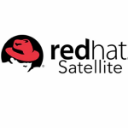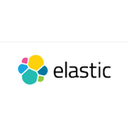Data Center Management software: purchase guide
Data Center Management Software in 2025: Full Control, Zero Downtime
What Is Data Center Management Software
Data center management software gives IT teams the centralized visibility and control they need to keep critical infrastructure running smoothly. From server orchestration to storage optimization and security enforcement, this software helps manage both physical and virtual environments—across multiple locations and vendors.
In 2025, the role of data centers has evolved. They’re no longer just server rooms—they’re hybrid ecosystems spanning on-prem hardware, private clouds, public clouds, and edge devices. Managing this complexity manually is no longer viable. Data center management software simplifies, automates, and secures the entire lifecycle of your IT operations.
Whether you’re provisioning new environments, tracking hardware usage, or identifying a performance bottleneck, this software gives you the insight—and actionability—you need.
Why It Matters More Than Ever
The modern data center is the backbone of every digital business. But when systems go down, performance dips, or compliance isn’t met, the consequences ripple across the company—from customer experience to revenue loss.
With growing pressure to do more with less, IT leaders need tools that automate routine tasks, spot issues before they escalate, and ensure peak performance across infrastructure stacks.
In an age of cyber threats, real-time monitoring and secure configurations aren’t luxuries—they’re requirements. Data center management software ensures every server, application, and connection is accounted for, optimized, and protected.
And as sustainability becomes a business imperative, smart resource management helps reduce energy consumption, heat output, and overall cost—all while maintaining uptime.
How to Choose the Right Data Center Management Software
Start with visibility. Can the platform monitor across environments—bare metal, virtualized, and cloud? You’ll want a tool that provides centralized dashboards, real-time analytics, and customizable alerts, so your team isn’t constantly reacting to blind spots.
Scalability is another must. As you grow, your data operations will too. Choose software that supports modular expansion, integrations with DevOps pipelines, and multi-tenant environments if you’re serving multiple internal teams.
Look at automation capabilities. The right tool won’t just show you what’s wrong—it will help fix it. From patch management to configuration drift remediation, automation reduces errors and speeds up response times.
Finally, pay attention to security and compliance. Especially if you're managing sensitive data, the software should support encryption, audit logging, and role-based access controls. Bonus if it helps streamline compliance with standards like ISO, HIPAA, or GDPR.
How to Implement It Without Disruption
Start by mapping your current data center architecture: what systems are in place, which tools you're already using, and what pain points you’re facing. Identify which tasks are eating the most time or causing the most friction—those are your priority use cases.
Pilot the software in a controlled environment before full rollout. Use sandboxing to simulate your operations and test integrations with monitoring, ticketing, and orchestration tools.
Train your teams early. Even if the platform is intuitive, onboarding sessions and documentation ensure faster adoption. Consider assigning internal “champions” to test and refine workflows before going company-wide.
Measure what matters. Whether it’s server uptime, alert resolution time, or power usage, define your KPIs and track them continuously. A strong implementation isn’t just about installing software—it’s about improving your operational rhythm.
Top Data Center Management Software in 2025
| Software |
Key Features |
Pricing |
Trial & Demo |
Best For |
| Red Hat Satellite |
Infrastructure automation, system provisioning, security patching |
Pricing on request |
✅ Free version
✅ Free trial
✅ Free demo |
Enterprises seeking powerful automation and governance tools |
| Talend Data Catalog |
Metadata management, data lineage, centralized cataloging |
Pricing on request |
✅ Free version
✅ Free trial
✅ Free demo |
Teams needing full data visibility and integration across silos |
| 3Descrypt |
Secure resource allocation, real-time monitoring, downtime prevention |
Pricing on request |
✅ Free version
✅ Free trial
✅ Free demo |
Businesses focused on high availability and operational security |
| Elastic Cloud Enterprise |
Unified cloud infrastructure management, workload orchestration |
Pricing on request |
✅ Free version
✅ Free trial
✅ Free demo |
Companies needing flexible, scalable control over hybrid environments |
Trends in Data Center Management for 2025
The future of data center management is smart, autonomous, and hybrid-native. In 2025, organizations are pushing toward self-healing infrastructure, powered by AI and advanced automation. The best platforms don’t just detect anomalies—they fix them automatically or escalate with context.
Cloud-native integrations are also driving change. As organizations embrace hybrid and multi-cloud environments, management platforms must provide unified oversight—whether you're running workloads on AWS, Azure, or your own servers.
Sustainability is now a key metric. Energy-efficient routing, thermal monitoring, and capacity forecasting tools are helping organizations reduce their carbon footprint while optimizing performance. Green IT is no longer a buzzword—it’s a boardroom KPI.
Lastly, the convergence of observability and security is defining a new baseline. Modern platforms combine monitoring, logging, vulnerability detection, and compliance reporting into one streamlined interface—reducing tool sprawl and improving incident response.
Conclusion
Data center management software isn’t just a tool for IT—it’s a strategic lever for performance, resilience, and innovation. In 2025, staying ahead means having a command center that brings visibility, automation, and control into one cohesive platform.
Whether you’re scaling your infrastructure, tightening your security posture, or just trying to sleep better at night knowing your systems are covered—this software makes it possible.
Because when your data center runs efficiently, your entire business does too.



